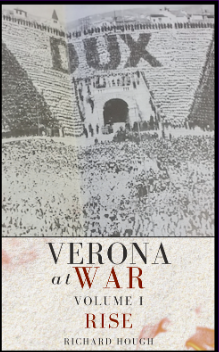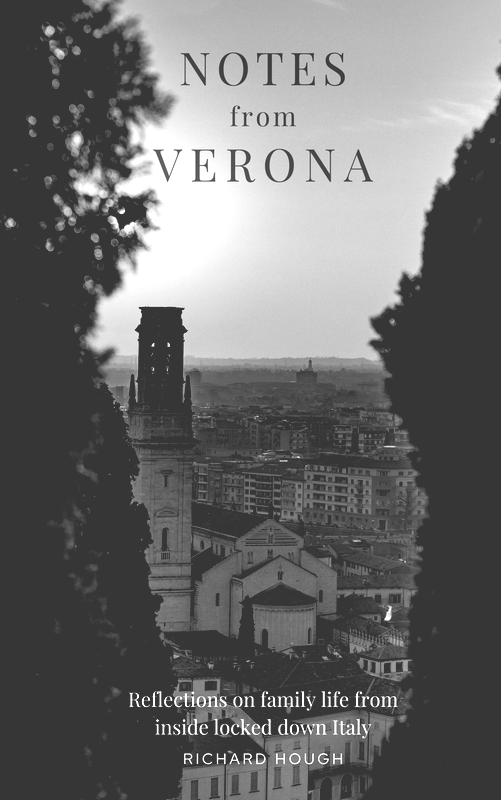|
Just a few yards from the hordes of tourists at Piazza delle Erbe and Piazza dei Signori, Piazza Indipendenza is generally overlooked by Verona’s many visitors.
Surrounded by mature trees, in one corner stands a towering sycamore. But the focal point of the piazza is the imposing statue of Garibaldi, Italy’s iconic general and politician, ‘father of the fatherland’, hero of the Italian wars of independence and leading figure in the formation of a unified Italy. His biscuits aren’t bad either.
Green, shady and peaceful, if you've had enough of dining out or if you're trying to avoid pasta altogether (as we are), this is one of the few places in Verona's historic centre where it’s possible to enjoy a quiet packed lunch. And so we found ourselves here one bright Tuesday lunchtime enjoying some crudités, raisins and home made banana bread.
To our east, adjoining Piazza Independenzia is Piazzetta Peschiera, to the west, Piazza delle Poste and the historic post office building. In September 1943, this was the scene of a dramatic battle... La Battaglia delle Poste
On 9 September 1943, this area was a battlefield, the sight of what is known locally as La Battaglia delle Poste.
 Plaque commemorating La Battaglia delle Poste, Piazza delle Poste, Verona Plaque commemorating La Battaglia delle Poste, Piazza delle Poste, Verona
The day before (8 September 1943), the Armistice between Italy and Allies had been announced. The Italian army had ceased combat and the Navy had sailed to Allied ports to surrender. German forces in Italy were preparing for the Italian capitulation and had begun to disarm Italian units and occupy important defensive positions, including the city of Verona, an important staging post to the north. A group of local soldiers and civilians, including 'Garibaldista' Darno Maffini and the future 'Gappista' Berto Zampieri, build barricades in various places throughout the historical centre of Verona in a vain attempt to stop the German occupation.
A bloody conflict took place in Piazza delle Poste, where the Germans unleashed a pair of Panzerkampfwagen VI Tiger Ausf.E, their infamous 'tiger' tanks.
The resistance held out for about eight hours. Towards evening the partisans were overwhelmed by the Nazi superiority in numbers and weapons. Maffini was wounded in the leg by a grenade explosion. Taken prisoner, he managed to escape a few days later and returned to Verona. He continued the resistance in France. Zampieri remained in Verona and participated in the assault on the prison degli Scalzi (see previous post, A place of execution).
The number of casualties is not known, but there were certainly fallen on both sides, including at least three from the resistance.
Piazza delle Poste has since been renamed Piazza Francesco Viviani. Viviani was a teacher, anti-fascist and prominent member of the Italian Resistance. On 2 July 1944 he was arrested, interrogated and tortured before being turned over to the Germans. He spent some time in the INA building (referred to in the previous post, In this building) and was later transferred to a transit camp in Bolzano. He was subsequently deported to Germany. He died in Buchenwald concentration camp on 6 February 1945.
As we finish our packed lunch, I gaze up at the statue of Garibaldi, then turn back to look once more at the giant sycamore in the far corner. We leave Piazza Independenzia, passing Caffe Viviani, through narrow via Dante to Piazza dei Signore. We turn left and pass under the Arco della Costa and soon emerge amongst the throngs of tourists enjoying their long lunch in Piazza Erbe. |
AboutRichard Hough writes about history, football, wine, whisky, culture + travel and is currently working on a trilogy about wartime Verona.
|






